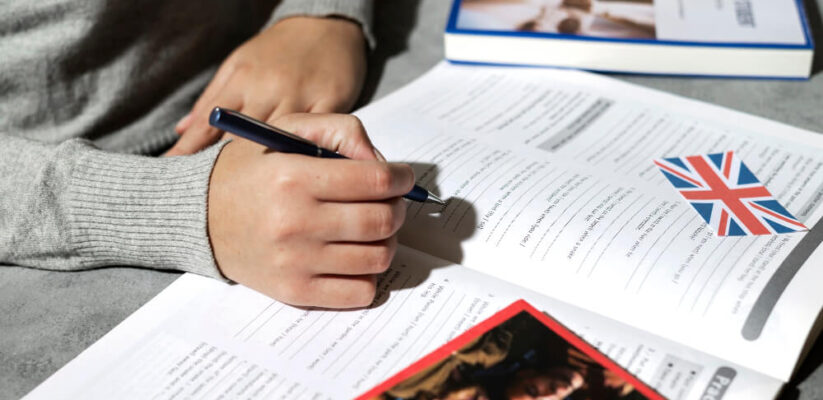The Differences Between the British Curriculum and Other International Curricula
If you are searching for a school for your child in Dubai, UAE, you might have come across several types of curricula; nonetheless, the British Curriculum (BC) and the International Baccalaureate (IB) Curriculum are two of the most renowned and commonly recognized international curricula adopted by most international schools in Dubai.
If you are confused about which one is better for your ward, you must know the difference between the British Curriculum (BC) and International Baccalaureate (IB) Curriculum. You need to think from all perspectives in order to get your child the best yet friendly education that they can understand and excel at.
Here are some of the main aspects that distinguish the British Curriculum from other international curricula:
Educational philosophy and goals
The British Curriculum is based on the UK’s national high-quality curriculum. The curriculum aims to offer a broad and balanced education for all young learners. The British Curriculum covers an array of topics and subjects such as math, science, geography, history, English, art, music, and physical education (PE). The curriculum also inspires students to build multi-dimensional thinking skills that help them in solving practical problems through critical thinking and independent research plus peer collaboration. At the end of the year in secondary school, the BC prepares students for the (I) GCSE examinations. And, it prepares students for A-level examinations at the end of the pre-university level. These qualifications are accepted and recognised by universities and employers worldwide.
On the other hand, the IB Curriculum is an international program developed to create intercultural blending and global citizenship among students. The IB Curriculum consists of four programmes:
- the Primary Years Programme (PYP),
- the Middle Years Programme (MYP),
- the Diploma Programme (DP), and
- the Career-related Programme (CP).
The IB Curriculum aims to develop curiosity-based learning, transdisciplinary skills, and personal and societal values. The curriculum culminates in the DP examinations at the end of the pre-university level, which are also accepted and recognised by universities and employers worldwide.
Curriculum Structure and Content
The British education system is divided into four stages:
- the Foundation Stage (ages 3-5),
- the Primary Stage (ages 5-11),
- the Secondary Stage (ages 11-16), and
- the Pre-university Stage (ages 16-18).
Each stage follows a set of core subjects (mandatory for all students) and a few non-compulsory subjects that learners can select as per their interests and capabilities. The curriculum may allow some flexibility and adaptation that suits local people and culture for academic excellence.
The IB Curriculum is also divided into four programmes:
- the PYP (ages 3-12),
- the MYP (ages 11-16),
- the DP (ages 16-19), and
- the CP (ages 16-19).
Each programme has a different structure and content, but they all share a common framework of six transdisciplinary themes:
- who we are,
- where we are in place and time,
- how we express ourselves,
- how the world works,
- how we organise ourselves, and
- sharing the planet.
The curriculum also incorporates three core components crucial for learners: theory of knowledge (TOK), creativity, activity, service (CAS), and extended essay (EE).
Teaching and Learning Methods
The British Curriculum follows a traditional but solid approach to teaching and learning, where teachers deliver lessons based on a prescribed syllabus and assess students through formal examinations and coursework. The curriculum emphasises knowledge acquisition and mastery of subjects in depth. British Curriculum-based school teachers use unique methods and extracurricular activities to interact with students to teach them subjects. This may include a lecture, discussion, demonstration, experiment, project-making, and an education/field trip.
The IB Curriculum follows a constructivist approach to teaching wherein tutors facilitate inquiry-based learning as per student interests and concerns. The curriculum focuses on concept-based understanding and knowledge application across all disciplines. IB-based teachers use a variety of settings that encourage students to learn subjects. This may include inquiry cycles, conceptual units, interdisciplinary networking, action projects, and reflection.
Advantages and disadvantages
The British Curriculum has many advantages, such as:
- It provides comprehensive and innovative learning that covers a wide range of subjects and skills.
- It prepares students for internationally recognised qualifications that open up opportunities for further education and employment.
- It allows for some flexibility and customisation to suit different contexts and needs.
- It fosters higher-order thinking skills and independent learning among students.
On the other hand, the IB Curriculum has some challenges such as:
- It can be too complex and demanding, requiring a lot of time and resources from students and teachers.
- It can be too abstract and theoretical, lacking relevance and applicability to real-life situations.
- It can be too idealistic and unrealistic, ignoring the practicalities and limitations of the world.
Conclusion
Both curricula have their own advantages and disadvantages, but in a way, the British curriculum in UAE is a bit more convenient and effective than other international curricula because it offers a balanced and rigorous education that prepares Dubai students for the challenges of the 21st century.

